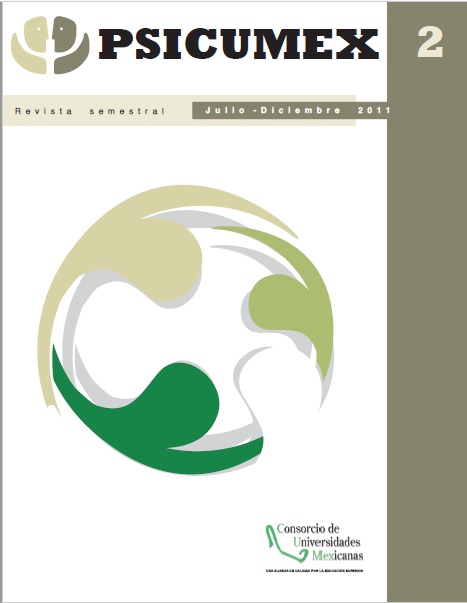Abstract
The objective of this study was to determine what is the meaning, function and how to solve the most significant situations of hate that have experienced young men and women throughout their lifes. The type of study is descriptive; we worked with a probabilistic sample of intentional type, composed of 400 college students aged between 17 and 23 years, divided equally by sex. We used a questionnaire consisting of 6 open-ended questions to assess the design and solution forms of hatred in the participant: What is hate?, In what situations arises hatred?, Why do people hate?, ¿What get people to hate, What prevents people to hate, and how do the people solves a situation of hate? Men and women report feeling hatred as a negative character, which creates resentment and can be expressed or repressed. Men see hatred as a psychological and physiological reactions that lead to the outside, while women appreciate it as a feeling that can point to themselves, as a matter of self-destruction. Men and women agree that the possible solutions of hatred may be those that are socially accepted, such as communication, getting help, the full expression of hatred, love, the pursuit of defenses and the neglect of the situation, while other possible alternatives that may not be accepted as the best in the social context, would be assault and attempted assassination of the hated person.
References
Aguilar, E. (1987). Asertividad: Cómo ser tú mismo sin culpas. México: Pax.
Aguinis, M. (2003). Las redes del odio. Recursos para desactivar la violencia. Buenos Aires: Planeta.
Álvarez Gayou, J.L (2003). Cómo hacer investigación cualitativa: fundamentos y metodología. México: Paidós.
Amato, M. 2007). La pericia psicológica en violencia familiar. Argentina: La Rocca.
Atri & Zetune, R. (2006). Cuestionario de evaluación del funcionamiento familiar. En Velasco, M. L. y Luna, M. del R. (Comp.). Instrumentos de evaluación en terapia familiar y de pareja (1-27). México: Pax.
Bartolomé, E. (2006). Educación emocional. México: Paidós.
BBC Mundo. (2008). Dónde nace el odio en el cerebro. Recuperado de http://news.bbc.co.uk/hi/spanish/science/news-id_7697000/7697274.stm
Brody N. & Ehrlichman, H. (2000). Psicología de la Personalidad. España: Prentince Hall.
Castilla del Pino, C. (2002) El odio. Barcelona: Tusquets.
Colina, C. (2010). Las paradojas del odio. Revista Razón y Palabra, 71.
Díaz Guerrero, R. (1982). La psicología del mexicano. México: Trillas.
Frager, R & Fadiman, J. (2001). Teorías de la personalidad. México: Oxford – Alfaomega.
Galimberti, U. (2007). Diccionario de Psicología. México: Siglo XXI.
Garrido, L. (2006). Apego, emoción y regulación emocional. Implicaciones en la salud. Revista Latinoamericana de Psicología, 38 (3), 493-507.
Hernández, S., Fernández, C. & Baptista, L. (2008). Metodología de la investigación. México: Mc Graw Hill.
Hupka, R. B. & Banco, A. L. (1996). Las diferencias de sexo en los celos: ¿Evolución o construcción social? Cross Cultural Research. Kaminsky, G. (1990). Spinoza la política de las pasiones. Buenos Aires: Gedisa.
Laursen, B. & Collins, W. (1994). Interpersonal conflict during adolescence. Psychological Bulletin, 115, 197-209.
Marina, J. & López, M. (1999). Diccionario de los sentimientos. Barcelona: Anagrama.
Mc Gregor, M. & Davidson, K. (2000). Men’s and women’s hostility is perceived differently. Journal of research in Personality, 34, 252-261.
Miller, J. B. (1987). Hacia una nueva psicología de la mujer. Boston: Beacon Press.
Mora, F. (1998). Los caminos cerebrales de la emoción y el placer. México: Nobel.
Oliva, A. (2006). Relaciones familiares y desarrollo del adolescente. Anuario de Psicología, 37 (3), 209-223.
Organización Ecuador Ciencia. (2007). Teoría del odio. Recuperado de http://www.ecuadorciencia.org/articulos.asp?id=3232
Reidl, Martínez L. M. (2005). Celos y envidia: emociones humanas. México: UNAM.
Reeve, J. (1994). Motivación y Emoción. Madrid. México: Mc Graw Hill.
Rodríguez, N. (2003). La comunidad del odio. Revista de Estudios Sociales, 16, 94-104.
Salecl, R. (2002). (Per)Versiones de amor y de odio. México: Siglo XXI.
Valdez Medina, J. L. (2009). Teoría de la paz o equilibrio: una nueva teoría que explica las causas del miedo y del sufrimiento, y que nos enseña a combatirlos. México: Edamex.
Valdez Medina, J. L., Díaz Loving, R. y Pérez Bada, M. (2005). Los hombres y las mujeres en México: Dos mundos distantes y complementarios. México: Universidad Autónoma del Estado de México.

This work is licensed under a Creative Commons Attribution-NonCommercial-NoDerivatives 4.0 International License.
Copyright (c) 2011

